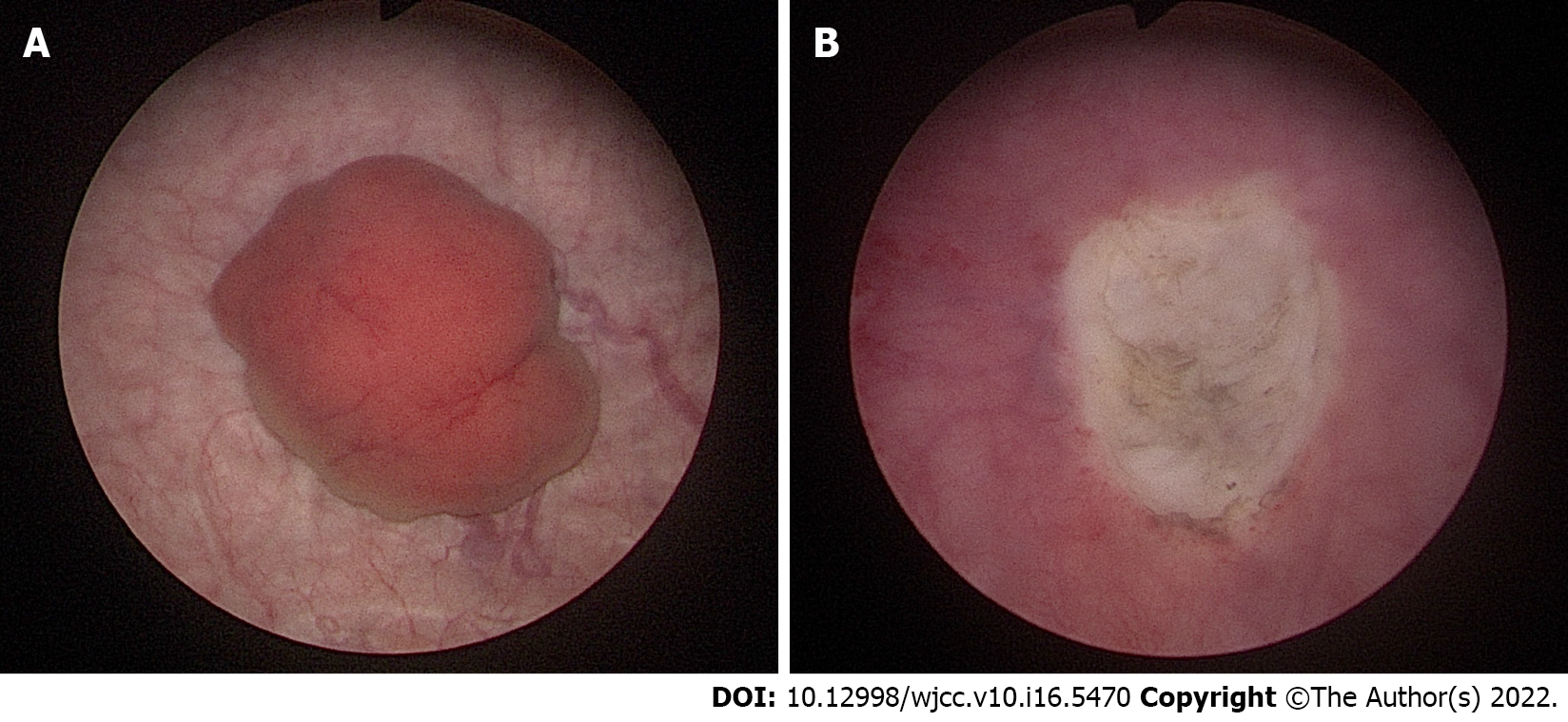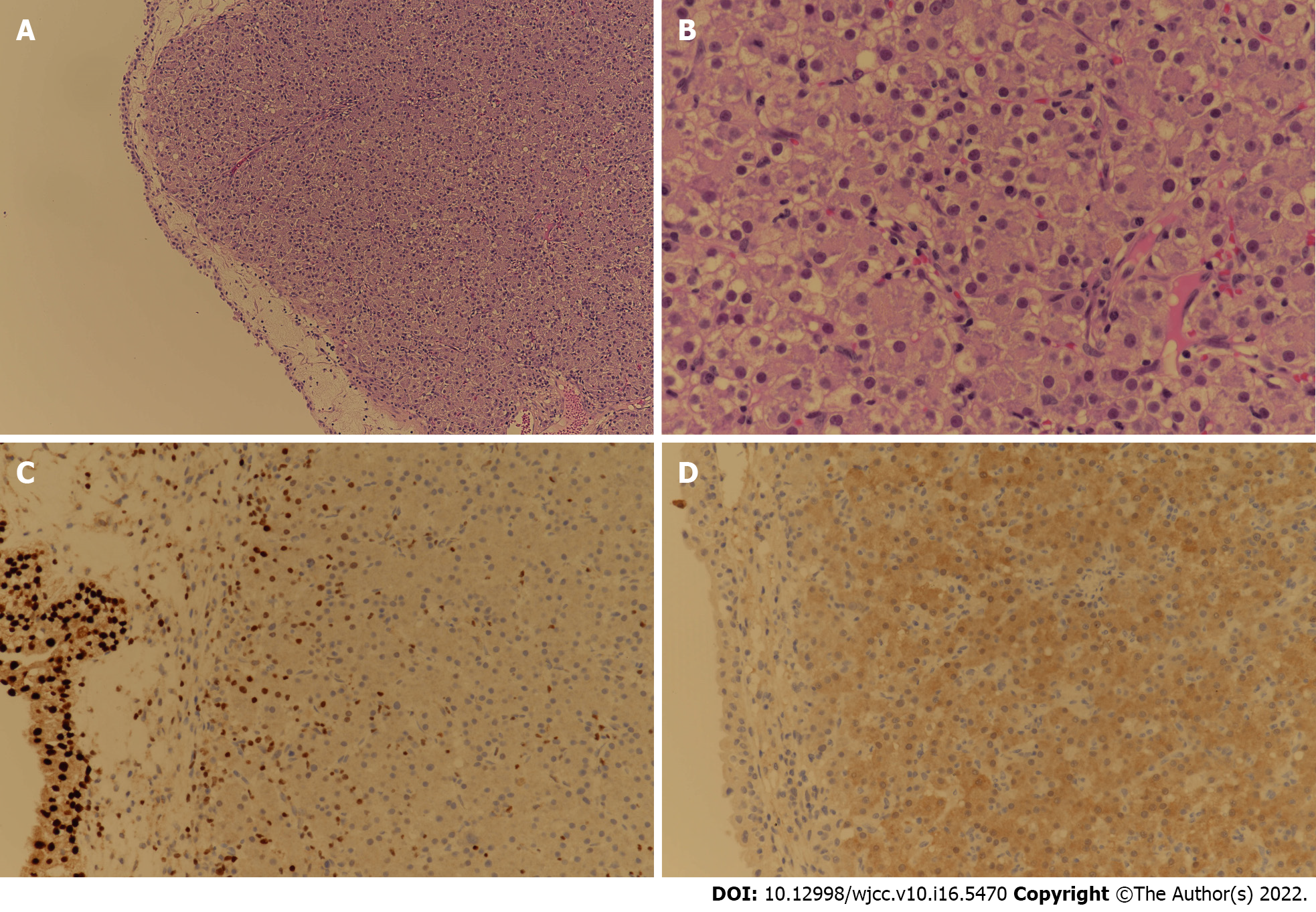Copyright
©The Author(s) 2022.
World J Clin Cases. Jun 6, 2022; 10(16): 5470-5478
Published online Jun 6, 2022. doi: 10.12998/wjcc.v10.i16.5470
Published online Jun 6, 2022. doi: 10.12998/wjcc.v10.i16.5470
Figure 1 Computed tomography of the patient at the time of hepatocellular carcinoma diagnosis.
A: Arterial phase at segment 5; B: Delayed phase at segment 5; C: Arterial phase at segment 8; D: Delayed phase at segment 8. Contrast-enhanced abdominal computed tomography revealed a 3.6 cm sized mass at segment 5 and infiltrative masses at S8 showing enhancement in arterial phase and wash-out in the delayed phase.
Figure 2 Tissue section obtained by liver biopsy.
A: Tumor cells are arranged in trabecular pattern on Hematoxylin & Eosin staining (× 100); B: Tumor cells show diffuse and strong staining with Hepatocyte Paraffin 1 (× 100), an anti-hepatocyte antibody.
Figure 3 Computed tomography of the patient at the time of bladder tumor detected.
There were lipiodol uptake in hepatocellular carcinoma at (A) segment 8 and (B) segment 5 without viable tumor after second transcatheter arterial chemoembolization; C: A 1 cm sized newly developed bladder tumor was also discovered; D: This was also well observed in the coronal view.
Figure 4 Cystoscopic findings during transurethral resection of bladder tumor.
A: A reddish polypoid bladder tumor was observed by cystoscopy; B: Bladder tumor was completely resected through transurethral resection of bladder tumor.
Figure 5 Tissue and immunohistochemical staining results of the bladder tumor tissue resected by transurethral resection of bladder tumor.
A: Tumor cells show solid sheet architecture in HE staining (× 100); B: Tumor cells are polygonal with nuclear atypia in HE staining (× 400); C: GATA binding protein 3 staining (× 200) is negative for tumor cells; D: Tumor cells are positive in Arginase-1 staining (× 200), which is compatible with hepatocellular carcinoma.
- Citation: Kim Y, Kim YS, Yoo JJ, Kim SG, Chin S, Moon A. Rare case of hepatocellular carcinoma metastasis to urinary bladder: A case report . World J Clin Cases 2022; 10(16): 5470-5478
- URL: https://www.wjgnet.com/2307-8960/full/v10/i16/5470.htm
- DOI: https://dx.doi.org/10.12998/wjcc.v10.i16.5470













